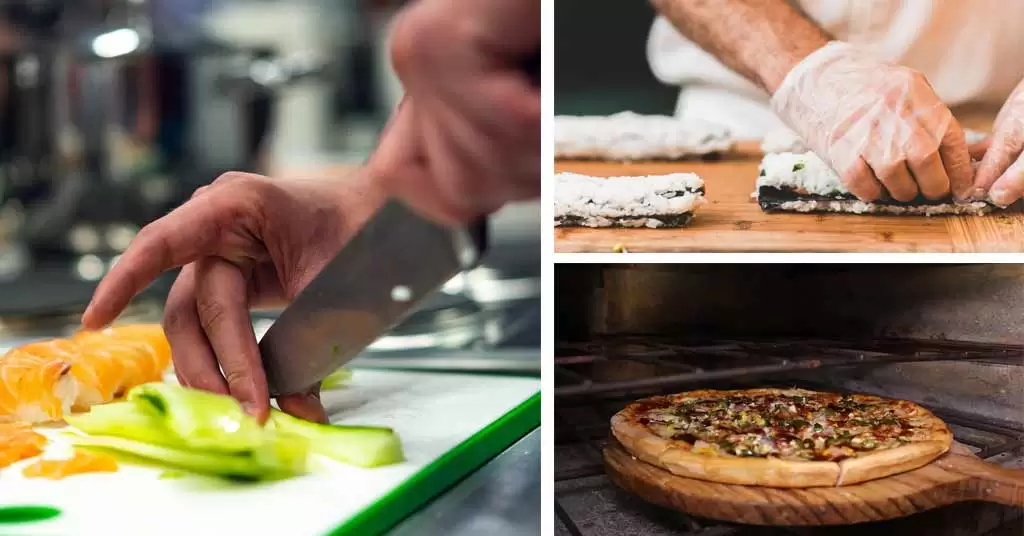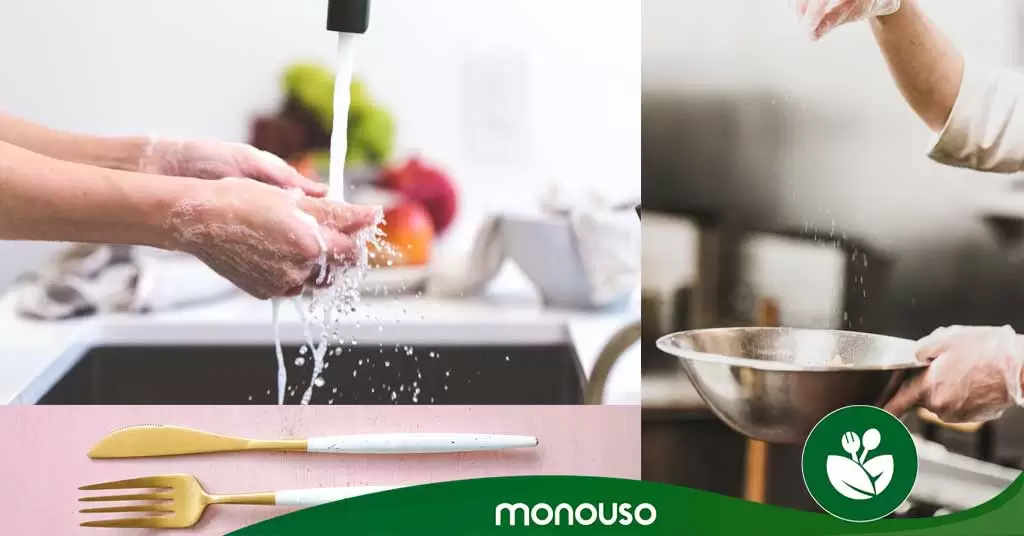Food safety standards refer to proper preparation and storage practice in order to prevent foodborne illness. These standards are imperative to ensure the health of customers, maximise the longevity of food products and develop proper risk management protocols. Follow these food safety tips in your restaurant to keep your customers safe.
6 food safety rules
1st food safety rule: wash your hands often
For optimal food safety, it is essential that all employees wash their hands before preparing and handling food, and when changing tasks. Wash thoroughly with soap and warm water for at least 20 seconds.
2. sanitise surfaces
Sanitising and cleaning surfaces, including preparation areas, cutting boards, equipment, storage areas, waste bins and floor drains should be an important part of your food safety regime. This process removes food residues, dirt and invisible germs from surfaces that may come into contact with food. You must clean and sanitise surfaces regularly to prevent pests from inhabiting them, and thus spreading harmful diseases such as Salmonella and Listeria, through food.

Create and implement sanitation procedures for employees to follow on a daily, weekly and monthly basis. The following is an example of a simple procedure to use in your facility that can keep work surfaces sanitary:
- First clean the area of debris or food debris.
- Then wash the surface with hot soapy water.
- To avoid chemical contamination, rinse the surface with water and a clean cloth.
- Wipe the area with a disinfectant wipe or other professional disinfectant.
- Allow the area to air dry.
Apart from disinfection products, heat can be used on things like cutlery to effectively disinfect. However, for this it is recommended that you soak the items in water at a temperature of at least 65°C for a minimum of 30 seconds. Alternatively, you can run the items through a high temperature dishwasher, as long as they are dishwasher safe. In addition, other common chemical disinfectants include chlorine, iodine and quaternary ammonium compounds
3rd food safety rule: washing fruit and vegetables
All fruits and vegetables should be washed thoroughly to remove any bacteria and dirt. The only exception is produce that is pre-packaged and labelled as pre-washed. Use clean, cold water and opt for a vegetable brush when necessary.
4º avoid cross-contamination
Cross-contamination occurs when bacteria, allergens or other harmful micro-organisms are inadvertently transferred from one object to another . Although often invisible to the human eye, the results of this process can be very dangerous or deadly to unsuspecting consumers.
In addition to hand washing, it is also necessary to follow other food safety rules such as using separate products when dealing with different types of food products. Use different cutting boards and separate containers for raw meats, vegetables and produce and cooked foods. You can opt for a colour-coded system to help staff keep track.
5. prepare and store food at a safe temperature
Be sure to prepare raw and ground meat, poultry, eggs and seafood at the correct temperature to avoid possible food poisoning.
Keep food out of the danger zone
The danger zone refers to temperatures between 5º and 57º C. For time and temperature sensitive foods such as meat, poultry, eggs and dairy products it is necessary to keep internal temperatures above or below the danger zone .
Cold foods should be stored below 5°C, while hot foods should be stored at 60°C or above. As a general rule, sensitive foods should not remain in the danger zone for more than 2 hours

6th pay attention to the removal of food
To prevent an outbreak of foodborne illness you need to be following food safety regulations and be aware of any recalls related to your inventory. Depending on your country of residence, the Department of Agriculture is responsible for publishing and updating lists of food recalls, so it is important to review these alerts.
How to prevent allergic reactions
Here are some tips on how to prevent allergic reactions in your restaurant:
- Never prepare an allergen-free meal with the same cutlery used for regular dishes.
- Use products designated as allergen-safe in your kitchen.
- Train staff to properly handle allergy requests from customers.
- Make sure staff are aware of the “Big 8” common food allergies: milk, fish, soy, tree nuts, peanuts, eggs, shellfish and wheat.
How to practice food safety standards in self-service areas
Even if your restaurant employees have adequate knowledge of food safety, it should be assumed that your customers will not. For this reason, self-service areas are susceptible to contamination.
- Frequently clean and sanitise surfaces, including serving utensils, food storage containers, sneeze guards and counters.
- Be sure to stock the restaurant with cutlery dispensers, napkins and straws designed for single use.
- For added hygiene, provide wrapped cutlery packets to reduce the possibility of contamination.
- Assign employees to supervise customers and take action in case of unsafe practices.
Keep your restaurant’s reputation intact and reduce the spread of foodborne illness by practising good food safety habits. Implementing programmes to prevent these problems will make your customers feel safe when enjoying lunch or dinner at your establishment.

